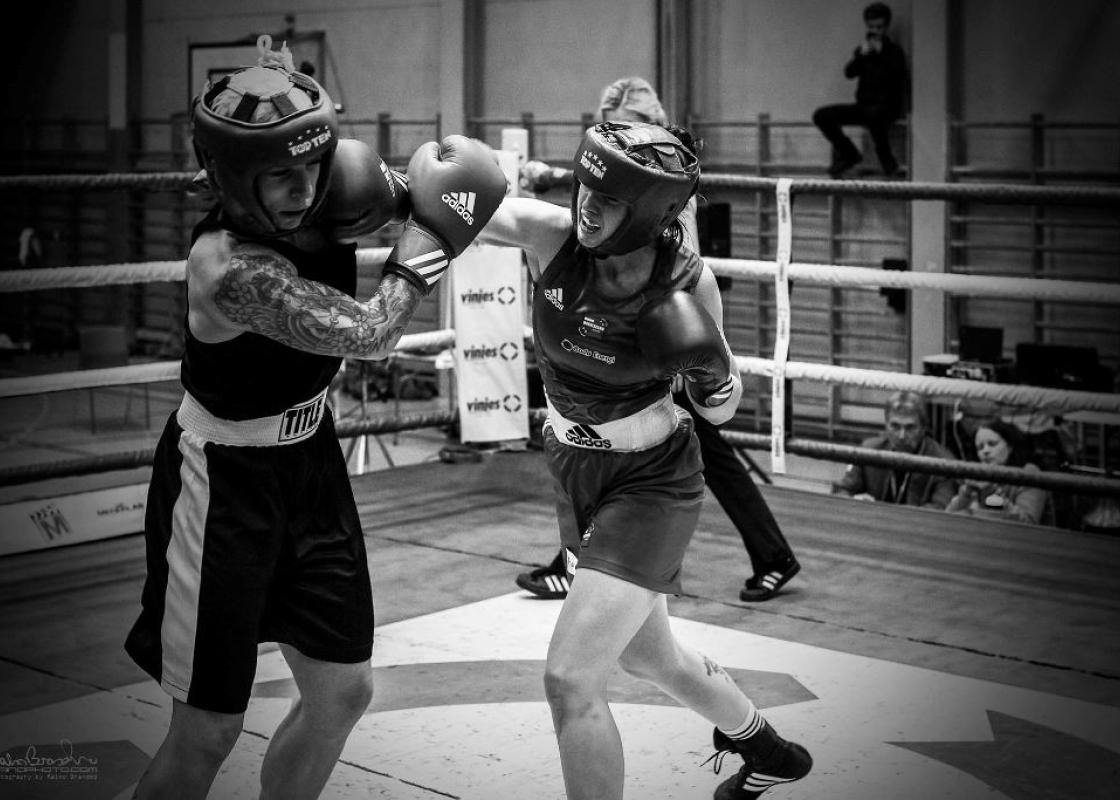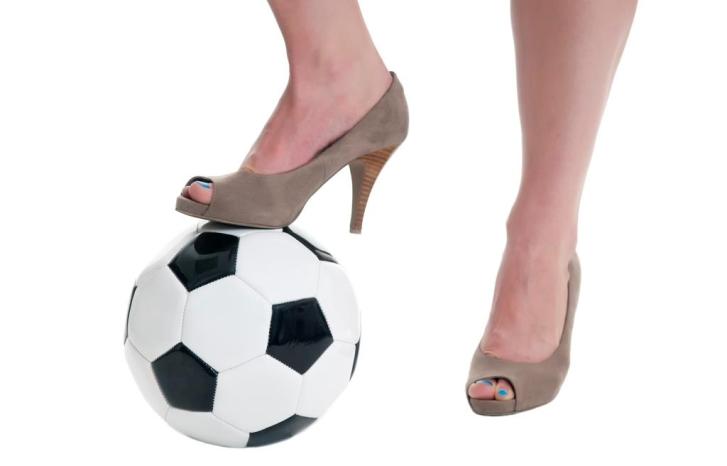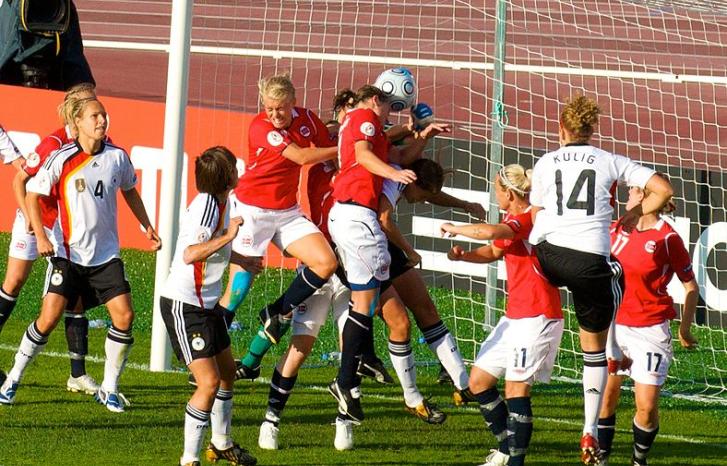“The history of sports has generally been dominated by men, and women’s sports are often ignored in a historical perspective. This particularly applies to sports traditionally associated with men and masculinity, such as boxing,” says Anne Tjønndal.
According to her, there are several reasons why women’s boxing history in Norway should be written.
Male dominated
“Although boxing is a sport dominated by men, that doesn’t mean that women don’t box or are active as coaches and managers within the sport,” she says.
Yet Tjønndal had to dig deep into the archives in order to find texts for her document analysis. The written material about the history of women’s boxing is rather sparse. She has read everything from old annual reports from local boxing clubs and the Norwegian Boxing Federation (NBF) to news articles about women’s boxing.
“Women have been excluded and marginalised in the history of boxing. Much because the sport is based on masculine traditions,” says Tjønndal.
“It is not regarded as suitable for women to fight. People don’t associate the qualities connected to boxing with femininity. In addition, boxing has been closely connected to male dominated areas of society such as war and the military.”
Interested in gender research? Sign up for our newsletter!
In Scandinavia
Boxing is a male dominated sport both in Norway and internationally. According to Tjønndal, there are some clear parallels between the history of feminism and the particularly strong history of women’s boxing in Scandinavia.
“Feminism has positively affected both sports in general and boxing more specifically.”
“Feminism has positively affected both sports in general and boxing more specifically. Gender equality has come a long way in Scandinavia compared to the rest of the world. This is also the case when it comes to boxing.”
Tjønndal also points to the big sports revolution in the 1970s and 80s that put pressure on male dominated sports and made sports in general more inclusive. Access to the various athletic disciplines for the general public was expanded significantly, and women got access to a number of disciplines that had previously been reserved for men only.
“Gender quotas have also been essential to women’s boxing since it was so concrete and easy to deal with for the sports confederation and the Norwegian Boxing Federation,” she says.
“The law forces women into various leadership positions both locally and centrally. This has obviously cleared the path for more female athletes as well.”
Strong women
It is impossible not to mention Cecilia Brækhus, who has had an enormous effect on our views on women’s boxing.
“Brækhus has given women’s boxing a public face, and she has obviously been very important for girls who have a desire to box,” says Tjønndal.
But there are other strong women in the Norwegian history of women’s boxing too. Tjønndal is referring to Helga Risøy, who won the Norway Box Cup in 1988 and was one of the first women’s boxing pioneers in Norway and internationally.
“Risøy represented Norway in the first unofficial boxing match for women in Sweden in 1988, she was the first female committee member of the NBF, and she fought for women’s rights in the boxing discipline both at home and abroad,” she says.
“Brækhus has given women’s boxing a public face.”
Risøy had to travel to the US to box because professional boxing was illegal in Norway in the 1990s. At the same time, unofficial amateur championships continued to take place in Norway.
“In the 1990s, Norway produced several talents within women’s boxing. Henriette B. Kitel distinguished herself by winning several medals in international championships.”
Another important figure referred to in Tjønndal’s article is the Swede Bettan Andersson. She contributed to Sweden being the first to legalise amateur boxing for women. She was also the first female board member of the International Boxing Association (AIBA).
According to Tjønndal, the first official Norwegian championship for female amateur boxers was held in 2000, following several unofficial championships for women in the nineties. In 2001-2002, women were allowed to participate in the European and World Championships.
“This also had positive effects for Norwegian women’s boxing.”
But the fight for gender equality continued to meet opposition.
“As late as in 2009, the International Boxing Association proposed that women were to wear a skirt when boxing during the Olympic Games in 2012,” says Tjønndal.
“Fortunately, the proposition didn’t go through.”
See also: Football on high heels
Olympic discipline
In 2012, women’s boxing was included as a discipline in the Olympic Games, although with certain reservations.
“Women were allowed to participate in three weight classes in the Summer Games in London in 2012, although they normally have ten weight classes. The same applies today. This is justified by the argument that the IOC doesn’t want too many participants in the Olympic Games,” says Tjønndal.
Men, on the other hand, are allowed to compete in all ten weight classes.
“AIBA decided to remove the helmet from senior men because it is safer.”
“A proposition was presented suggesting that men were to participate in less weight classes in order to allow women to participate in more classes, but this never became a real debate within the IOC and the AIBA.”
Women’s boxing is also affected by the general critique against boxing, which remains the same regardless of gender.
“A few years ago, AIBA decided to remove the helmet from senior men because it is safer,” says Tjønndal.

The decision was controversial, but AIBA is relying on studies showing that the number of acute brain injuries is higher when boxers use helmets, and they are therefore of the opinion that helmets provide a false safety.
“Thus, it is a paradox that female boxers still have to use helmets. The argument used is that we don’t know enough about whether the effect is the same on men’s and women’s brains when they box.”
Tjønndal is a boxer herself, and she is glad that women still use helmets when they box. “I am not sure whether I will keep participating in championships if the helmet is removed from women’s boxing”, she says. There is disagreement among boxers and coaches about the decision. Some praise it, others are critical.
“Personally I’m critical of the studies referred to by AIBA. I’m worried that this is just a market phenomenon, that boxing becomes more profitable without the helmet.”
See also: Muscles and medicine
Boxing facing opposition
Tjønndal emphasises that boxing always has been met with opposition in Norway.
“Many people claim that women’s entry to the boxing ring has positively affected the views on boxing by “normalising” the views on boxing as an athletic discipline,” she says.
“It is hard to tell whether this is correct. The view on boxing as a violent and barbaric sport for men is still widespread and still prevalent today in the heated debate about professional boxing.
According to her, the reasons why professional boxing is legal in Norway today are many and complex.
“The popularity, the image, and Cecilia Brækhus’ unexcelled athletic success have all been significant. However, there are central actors within Norwegian boxing who have worked long and hard to legalise professional boxing in Norway. Today we reap the benefits of this work.”
“The abolishment of the ban against professional boxing is primarily about the right to decide over my own body.”
According to Tjønndal, there are also reasons to believe that the current “blue-blue” government’s policy has been a prerequisite for getting the ban abolished.
“I personally hope that the abolishment of the ban against professional boxing in Norway can contribute to a destabilisation of some of the myths and stereotypes often associated with martial arts and their performers such as boxing and boxers,” she emphasises.
She is also engaged in the recruitment to amateur boxing at all levels: children, youth, and adult exercisers.
“For me the abolishment of the ban against professional boxing is primarily about the right to decide over my own body. Individuals choosing to build a career in the boxing ring know the risks involved just as other professional athletes.”
Tjønndal claims that women’s boxing is in many ways equal to men’s boxing today.
“The Norwegian Boxing Federation has done a good job facilitating growth and development for women boxers over the past few years, for youth and juniors in particular. Much remains to be done in terms of gender equality in leadership positions within Norwegian boxing, however. There are still very few female referees, coaches, and managers in Norwegian clubs.”
Sources: Tjønndal, A: «The History of Women’s Boxing in Norway», in Sport History Review, 2016, 47, 3–25, «The Inclusion of Women’s Boxing in the Olympic Games: A Qualitative Content Analysis of Gender and Power in Boxing» in Qualitative Sociology Review, Volume XII Issue 3 and «Kjønn som sparringspartnere» in Tidsskrift for kjønnsforskning, 2016, no. 3–4-2016, 40, p. 186–202.
Translated by Cathinka Dahl Hambro
Amateur boxing or Olympic boxing, as it is now referred to, is organised by the International Boxing Association AIBA. Thicker gloves are used here than in professional boxing, and women, youth, and juniors wear helmets. Men do not wear helmets. The performers are not paid to fight matches, and the best fighters in the world compete in the World Championship and in the Olympic Games.
Professional boxing is organised by various associations. The professional boxers use thinner gloves and both men and women fight without helmets. The performers are paid to fight matches. Who belongs to each category is dependent on a number of factors such as which boxing association the fighter belongs to as well as commercial interests.
Anne Tjønndal is a PhD candidate at the Faculty of Social Sciences at Nord University. She investigates innovation within sports, physical activity, and public health, with an emphasis on how change and new ideas may contribute to increased inclusion.



